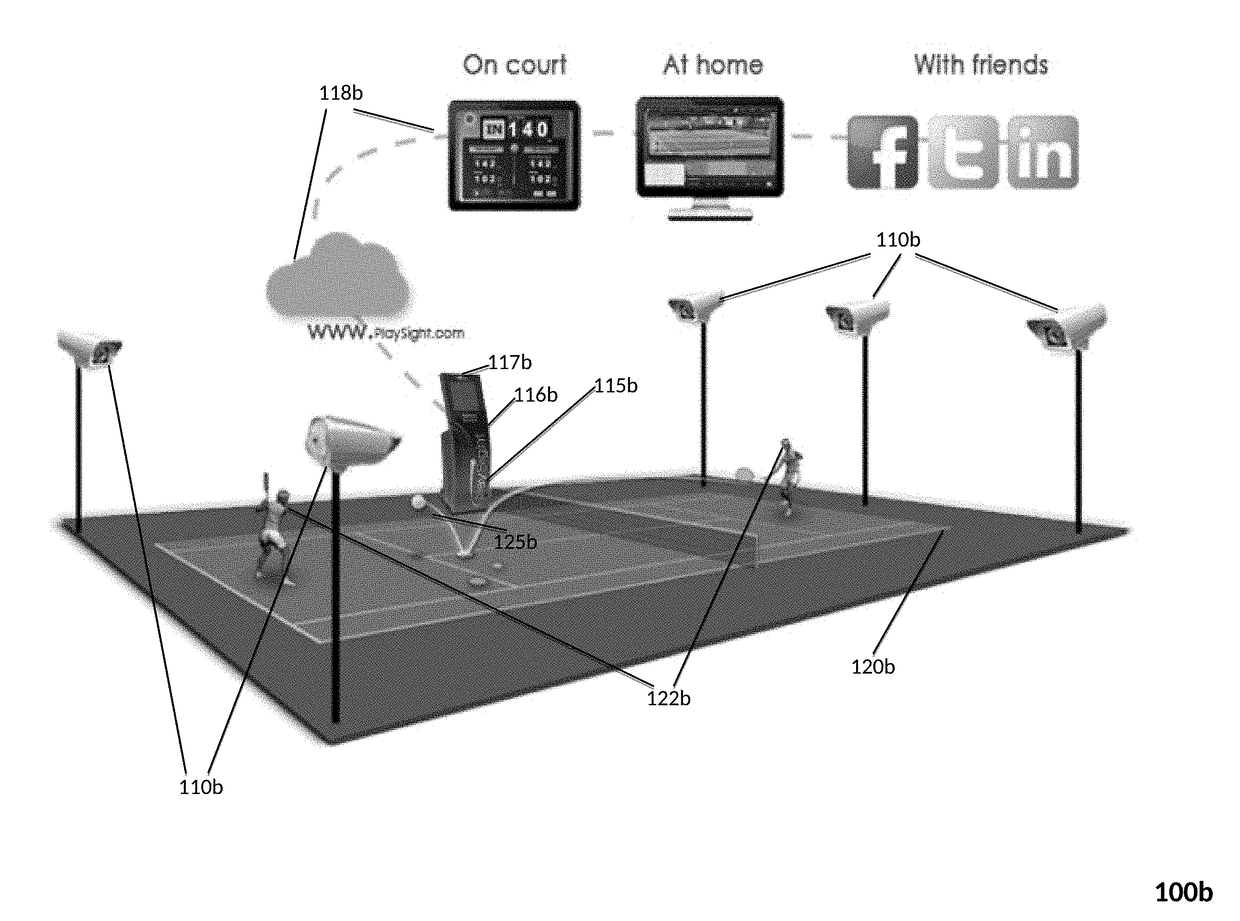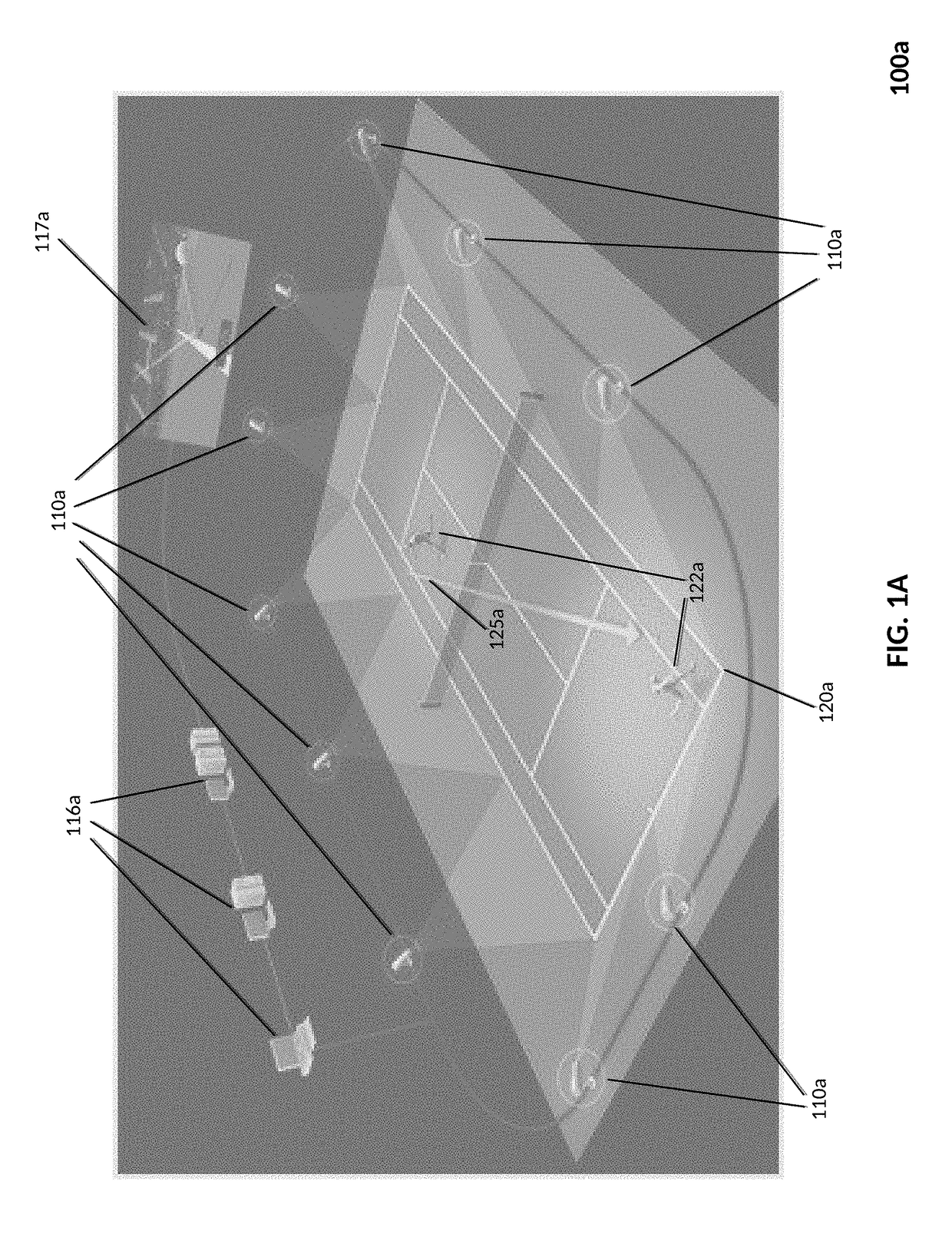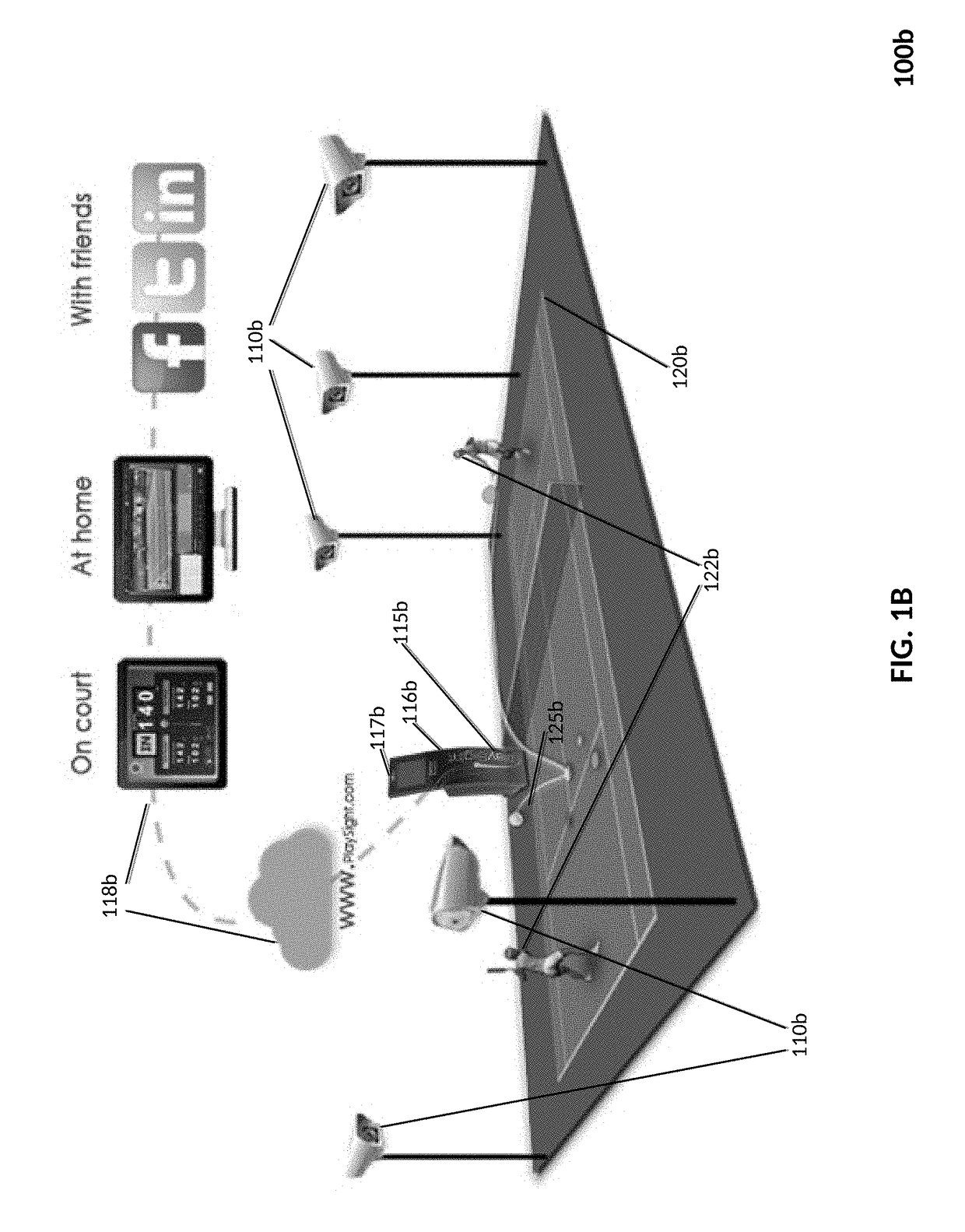Planar Solutions to Object-Tracking Problems
a technology of object tracking and planar solutions, applied in the field of computer vision, can solve problems such as large advance setup, maintenance and operating obstacles, and similar problems, and achieve the effect of reducing costs, improving accuracy, and high-quality line calls
- Summary
- Abstract
- Description
- Claims
- Application Information
AI Technical Summary
Benefits of technology
Problems solved by technology
Method used
Image
Examples
Embodiment Construction
[0058]In one embodiment of the present invention, illustrated in image 200 of FIG. 2, an automated tennis line-calling device 210 is located in proximity to a tennis net post 221 on a tennis court 220 (including standard court lines and a net attached between two net posts). Image 200 includes the entire tennis court 220 and surrounding area, as well as players 222 (only one shown) and the tennis ball 225. Also shown in image 200 is a laser 216 (discussed in greater detail below) employed in an alternative embodiment of the present invention to facilitate precise location of a ball upon its initial bounce on the surface of a tennis court.
[0059]Line-calling device 210 is illustrated as physically attached to net post 221 to provide a relatively close “camera view” of both sides of the entire tennis court 220, and to facilitate an extremely convenient setup process since all tennis courts have net posts. In other embodiments, line-calling device 210 is located in proximity to net post...
PUM
 Login to View More
Login to View More Abstract
Description
Claims
Application Information
 Login to View More
Login to View More - R&D
- Intellectual Property
- Life Sciences
- Materials
- Tech Scout
- Unparalleled Data Quality
- Higher Quality Content
- 60% Fewer Hallucinations
Browse by: Latest US Patents, China's latest patents, Technical Efficacy Thesaurus, Application Domain, Technology Topic, Popular Technical Reports.
© 2025 PatSnap. All rights reserved.Legal|Privacy policy|Modern Slavery Act Transparency Statement|Sitemap|About US| Contact US: help@patsnap.com



